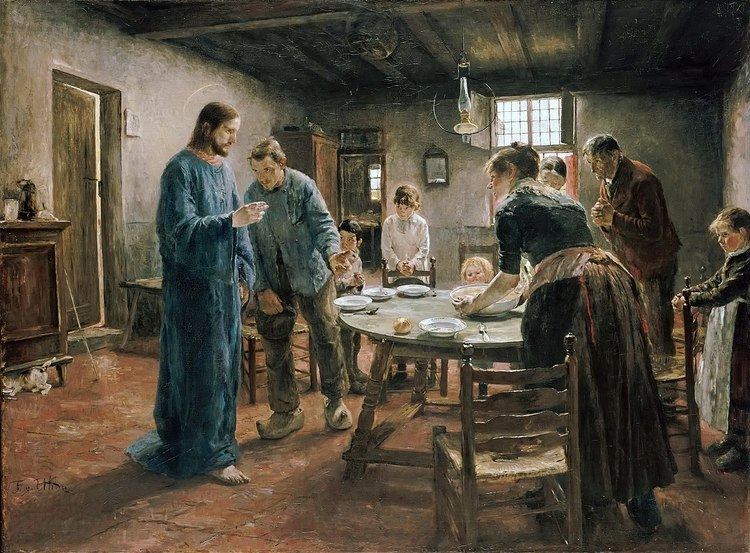 | ||
Contemporary fantasy, also known as modern fantasy or indigenous fantasy, is a subgenre of fantasy, set in the present day. It is perhaps most popular for its subgenre, urban fantasy.
Contents
Definition and overview
These terms are used to describe stories set in the putative real world (often referred to as consensus reality) in contemporary times, in which magic and magical creatures exist but are not commonly seen or understood as such, either living in the interstices of our world or leaking over from alternate worlds. It thus has much in common with, and sometimes overlaps with secret history; a work of fantasy in which the magic could not remain secret, or does not have any known relationship to known history, would not fit into this subgenre.
Novels in which modern characters travel into alternate worlds, and all the magical action takes place there (except for the portal required to transport them), are not considered contemporary fantasy. Thus, C.S. Lewis's The Lion, the Witch and the Wardrobe, where all fantasy events take place in the land of Narnia which is reached via a magic wardrobe, would not count as contemporary fantasy; on the other hand, the part of The Magician's Nephew, where the Empress Jadis gets to London, tries to take over the Earth and clashes with police and a crowd of cockneys, would qualify as such.
Contemporary fantasy is generally distinguished from horror fiction – which also often has contemporary settings and fantastic elements – by the overall tone, emphasizing joy or wonder rather than fear or dread.
In his preface to That Hideous Strength, one of the earlier works falling within this subgenre, C.S. Lewis explained why, when writing a tale about "magicians, devils, pantomime animals and planetary angels", he chose to start it with a detailed depiction of narrow-minded academic politics at a provincial English university and the schemes of crooked real estate developers: "I am following the traditional fairy-tale. We do not always notice its method, because the cottages, castles, woodcutters and petty kings with which a fairy tale opens have become for us as remote as the witches and ogres to which it proceeds. But they were not remote at all to the men who first made and enjoyed the tales". The same is true for many of the later works in the genre, which often begin with a seemingly normal scene of modern daily life to then disclose supernatural and magical beings and events hidden behind the scenes.
Subgenres
Contemporary fantasies often concern places dear to their authors, are full of local color and atmosphere, and attempt to lend a sense of magic to those places, particularly when the subgenre overlaps with mythic fiction.
When the story takes place in a city, the work is often called urban fantasy.
The contemporary fantasy and low fantasy genres can overlap as both are defined as being set in the real world. There are differences, however. Low fantasies are set in the real world but not necessarily in the modern age, in which case they would not be contemporary fantasy. Contemporary fantasies are set in the real world but may also include distinct fantasy settings within it, such as the Harry Potter series, in which case they would be high rather than low fantasy.
19th and early 20th century
Later 20th and early 21st centuries
Overlap with other genres
Contemporary fantasy can also be found marketed as mainstream or literary fiction and frequently marketed as magical realism, itself arguably a fantasy genre. Examples include Practical Magic by Alice Hoffman, The Antelope Wife by Louise Erdrich, and Mistress of Spices by Chitra Bannerjee Divakaruni.
In other media
Type-Moon's Fate/Stay Night is set in Fuyuki City, in a world where magic is disappearing as science and technology overtake it and make it functionally redundant, certain families in the city and the world at large have magical circuits in their souls, and can cast spells among other abilities, while Takahiro Yamato's Kaze no Stigma is set in modern Japan and center around a young man with powers to control wind.
The Mighty Thor of Marvel Comics can also be considered to belong to this subgenre, depicting a god of Norse mythology sharing his life between 20th Century New York City and the legendary Asgard. The same can be said of Hellboy.
The Longest Journey is a video game in which the protagonist discovers that an alternate magical reality exists in parallel with her contemporary urban reality.
Once Upon a Time is a television series that are based on fairy tales and the modern, 21st-century real-world acting as one of the settings in the show.
The teenage witch Sabrina Spellman, living in contemporary America, clearly belongs to this genre, as do the characters of the sitcom Bewitched and of the film The Witches of Eastwick.
